
William Randolph Hearst's Toilets, Sinks, Showers, Fountains, and Pools
William Randolph Hearst's Plumbing
William Randolph Hearst was a leading American newspaper publisher, starting with The San Francisco Examiner in 1887. He went on to acquire a large chain of newspapers, including almost 30 newspapers in major American cities. He later expanded his publishing empire to include magazines, creating the largest newpaper and magazine publishing company in the world.
Teddy Roosevelt wanted a war, and Hearst's newspapers gave it to him by driving public opinion toward the war with Spain in 1898. You might want to also browse the Toilets of World Leaders. Hearst was very influential in domestic politics and, at least in the case of the Spanish-American War, geopolitics, but he seemed to fit a little more obviously into Arts & Letters since his empire was based on publishing.
Hearst owned an estate on a large hill above San Simeon on the coast of California between Los Angeles and San Francisco. He formally named the estate La Cuesta Encantada or The Enchanted Hill, but he usually referred to it simply as "The Ranch".
San Simeon was then a rather remote location a significant traveling distance north of Los Angeles, and an even longer journey from San Francisco. The completion of California Highway 1, the Pacific Coast Highway, made San Simeon much more accessible.
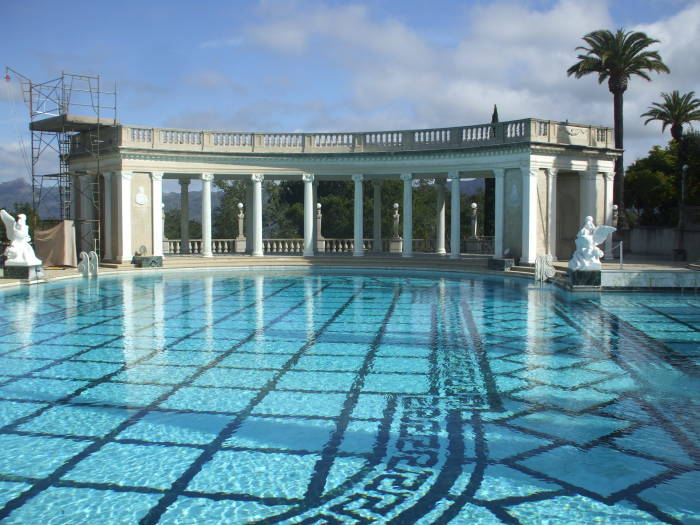
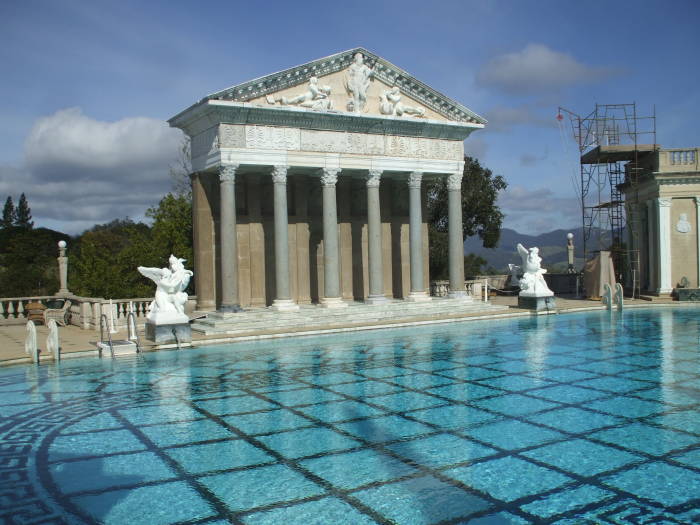
The complex of structures commonly called Hearst Castle was designed and repeatedly re-designed and constructed over the period from 1919 through 1947.
The Neptune Pool, seen here, was rebuilt three times, changing with Hearst's tastes and the architect's plans. It was started in 1924, and finally reached its final form as seen here in 1936.
The Neptune Pool is based around the façade of an ancient Roman temple. Hearst purchased the temple in Italy. He had it disassembled, transported from Italy to California, and reassembled on his estate. It is surrounded by Roman style columns and statuary.
Water for the estate was supplied through a gravity-based system. This system collected water from artesian wells on Pine Mountain, an 1100 meter peak 11 kilometers to the east of the castle complex. The water was piped to a reservoir on Rocky Butte, a 610 meter hill a little over a kilometer southeast of the castle. From there, it was piped to the estate to supply the pools, the bathrooms, and irrigation for the extensive gardens and orchards.
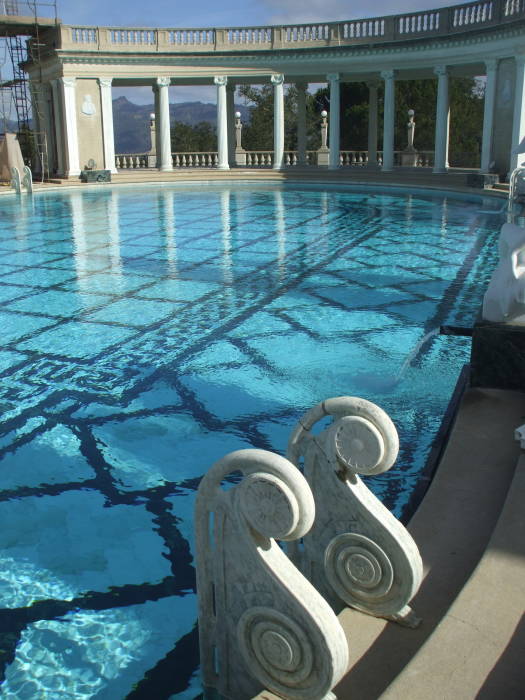
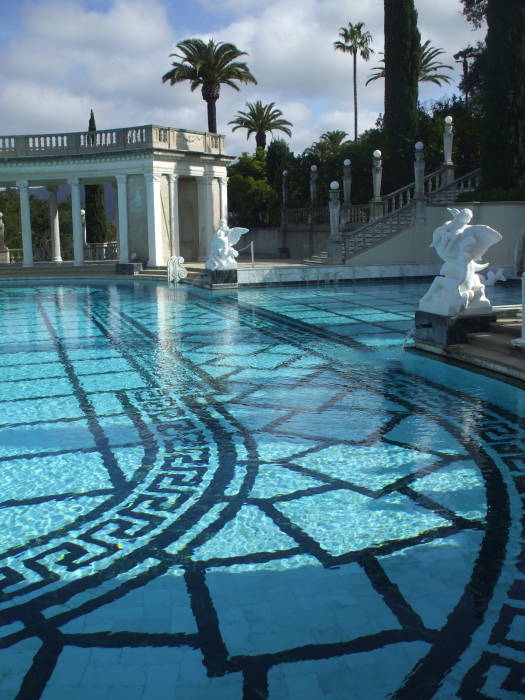
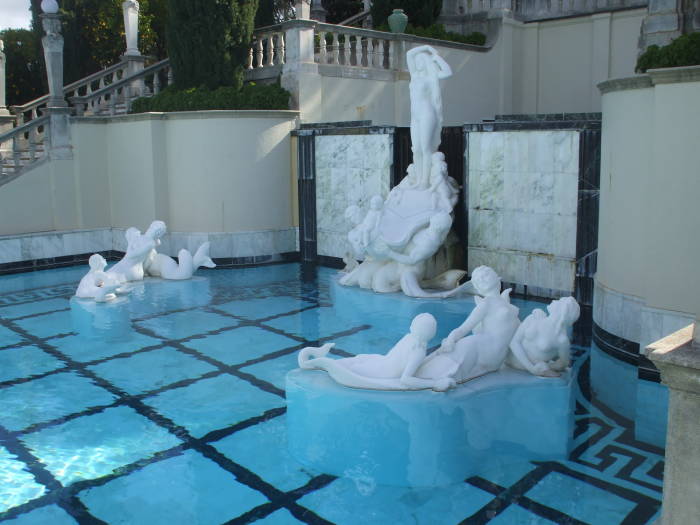
Hearst's architect, really his collaborator on the project over the nearly 30 years of primary construction and modification, was Julia Morgan.
Morgan was a graduate of the Civil Engineering program at the University of California, Berkeley. She was the first woman to graduate from the École National Supérieure des Beaux-Arts in Paris.
The structure's exterior design and decoration is taken from a wide mixture of historic European styles. However, the underlying structure is mostly steel-reinforced concrete. It has weathered numerous earthquakes, some of them quite strong, with minimal damage.
In Hearst's time, there was no electrical service in the area. The estate had its own power plant.
Amazon
ASIN: 0810934159
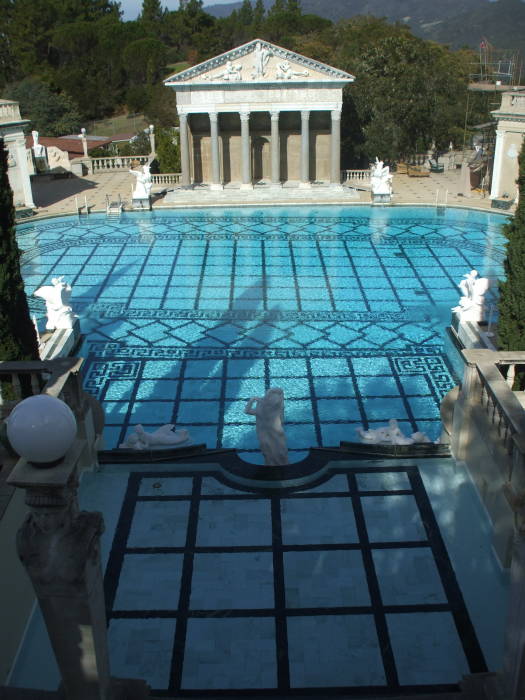
The main building in the Hearst Castle complex has a façade patterned after a specific Spanish cathedral. A set of "guest cottages", each of them a fairly large structure, surrounds the main structure.
The resulting complex includes 56 bedrooms and 61 bathrooms. Some of the bathrooms from the guest cottages are seen below.
The elite of the political and entertainment worlds hoped for invitations to the castle. Winston Churchill and U.S. Presidents Calvin Coolidge and Franklin Roosevelt were among Hearst's guests, along with Charlie Chaplin, the Marx Brothers, Jimmy Stewart, Cary Grant, Clark Gable, Joan Crawford, Bob Hope, and many others.
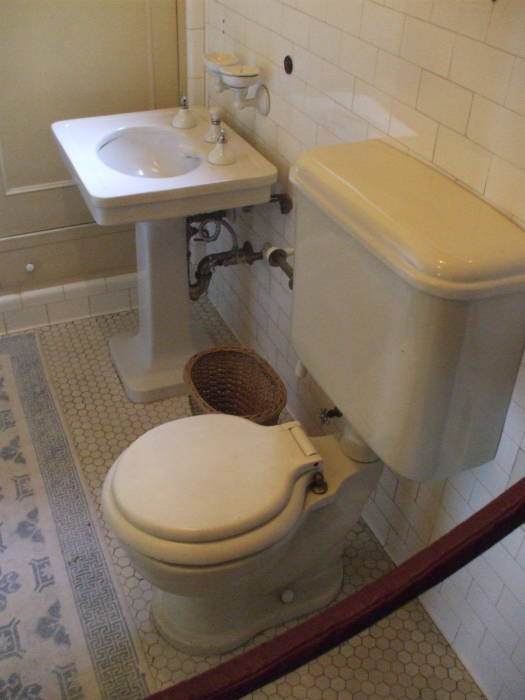
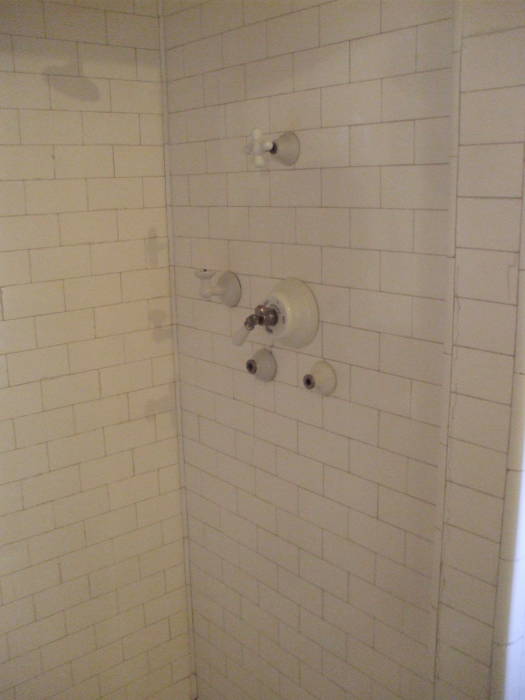
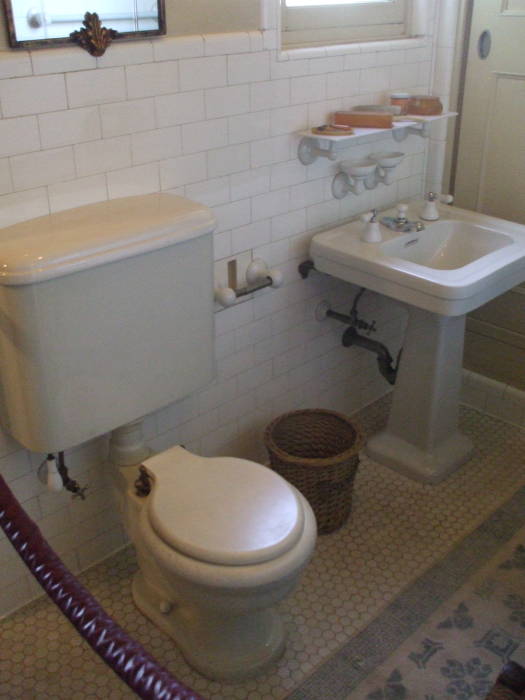
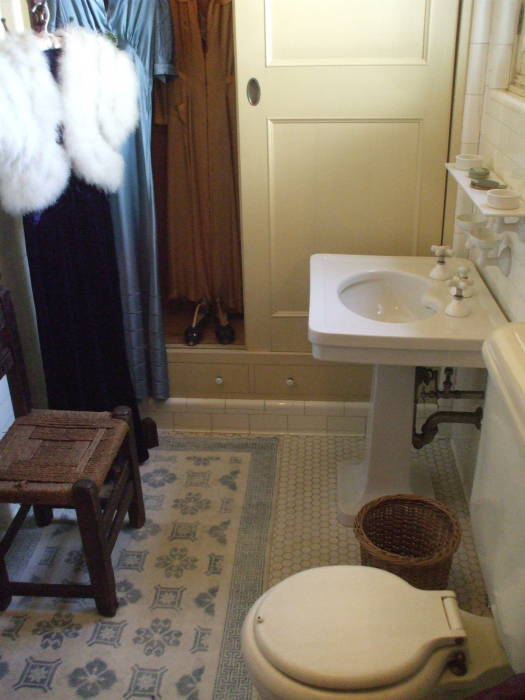
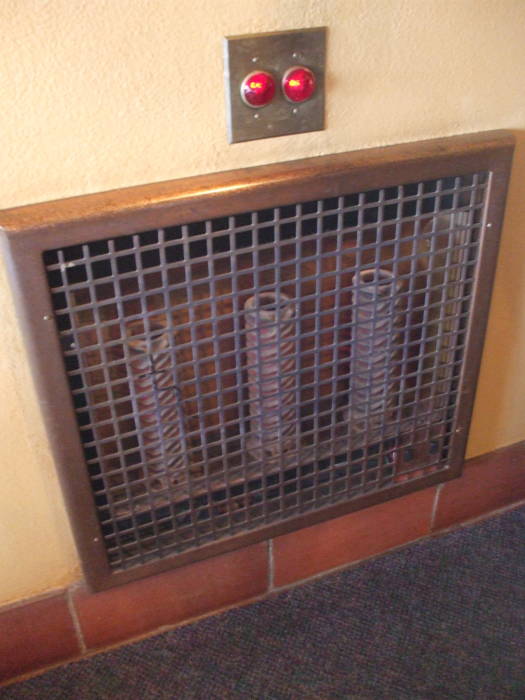
While I'm detailing the plumbing, I should include some of the other 1920s infrastructure such as the electrical heating system.
The heating system has three ceramic cylinders. Each cylinder has a length of helical nichrome wiring spiraling around it.
The castle is in coastal central California. While it doesn't get frigidly cold, heat would be needed in the bedrooms in the winter.
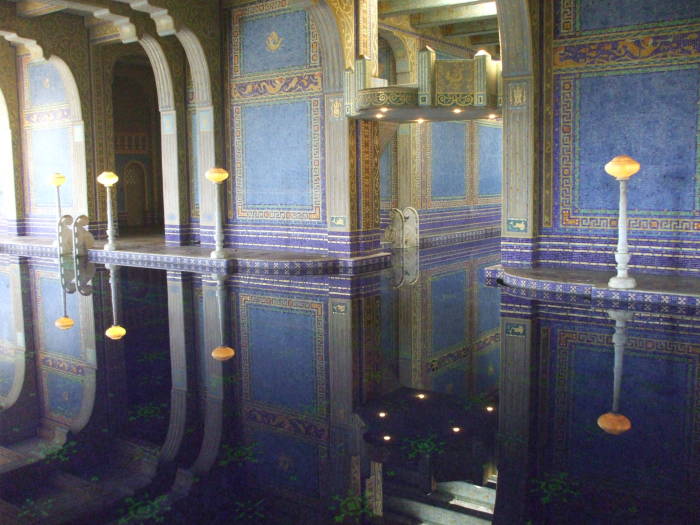
This is the indoor swimming pool. The walls and the pool itself are covered in decorative ceramic tiles with gilding.
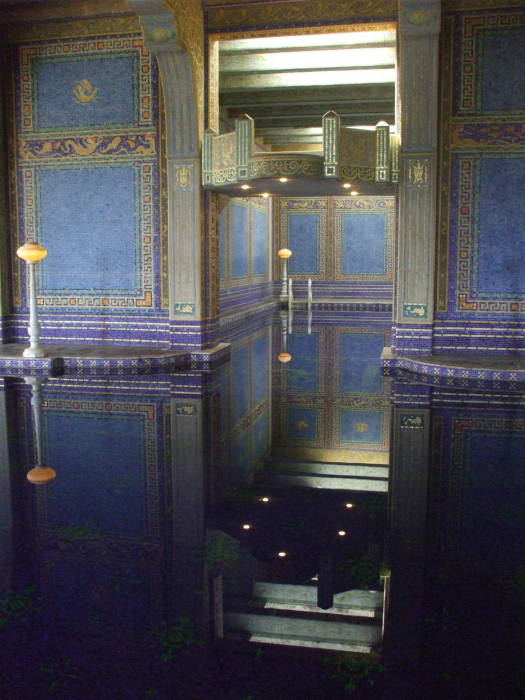
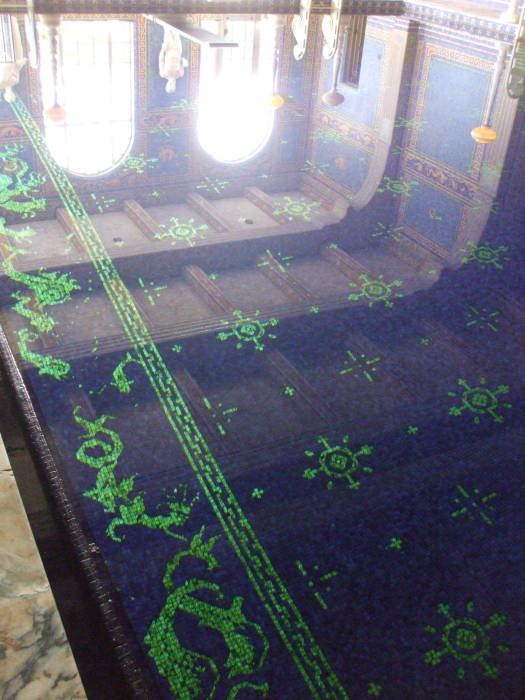
Amazon
ASIN: B005MMY5RK
Amazon
ASIN: 034532739X
Yes, Orson Welle's movie Citizen Kane is based on Hearst. The cinematography and sound were revolutionary. The story, however, at least to me, can be summarized as "Sometimes bad things happen to unpleasant people." And it's not very logical.
The movie opens as Kane, the fabulously wealthy owner of a media empire, dies alone. The course of the movie follows a journalist (we never see his full face), investigating the meaning of Kane's final word, "Rosebud".
So here's a question: Since Kane died alone, how did anyone know what he said?